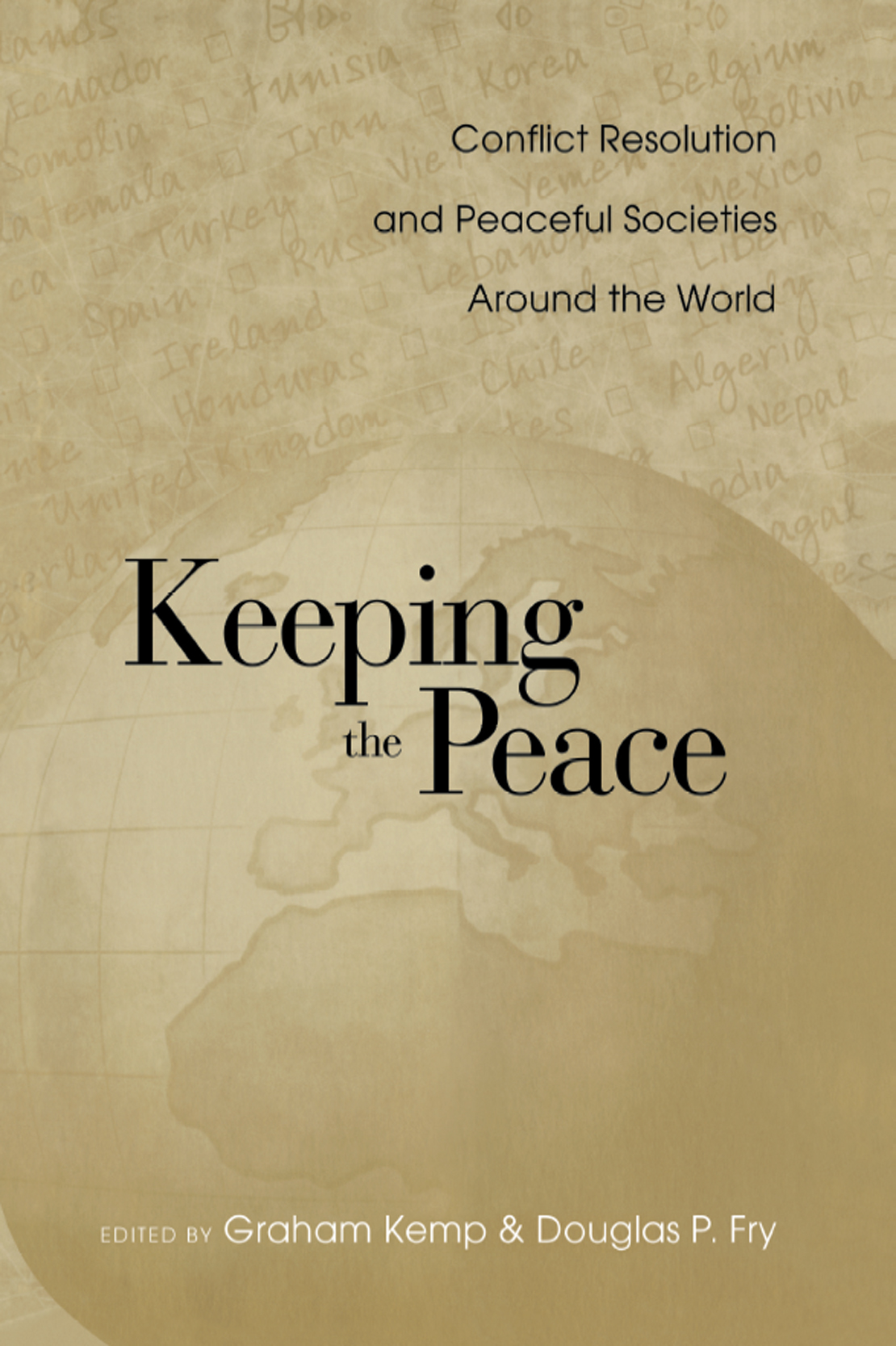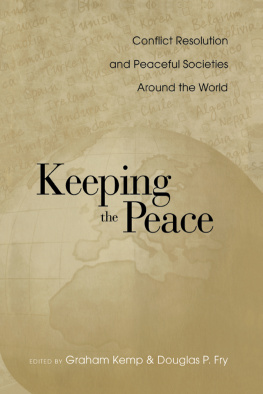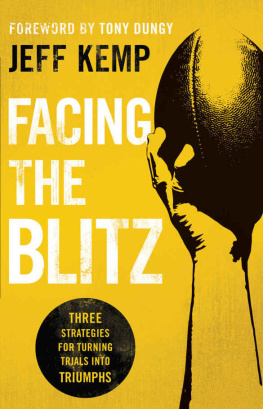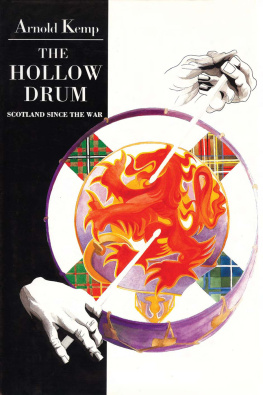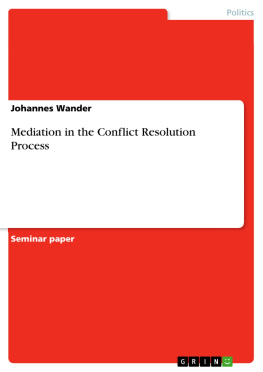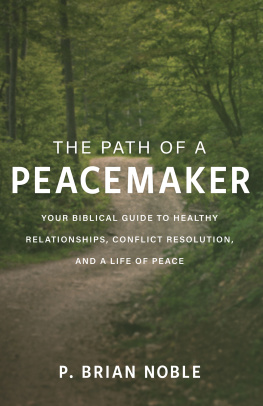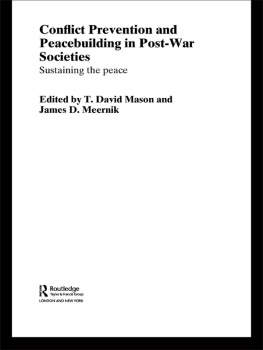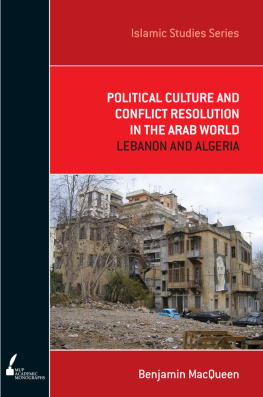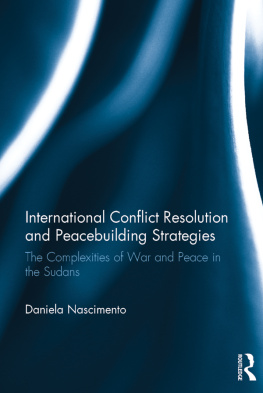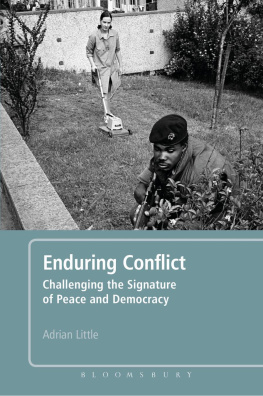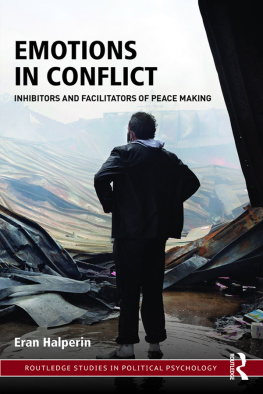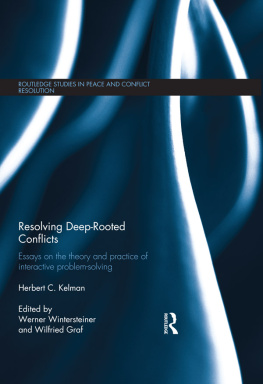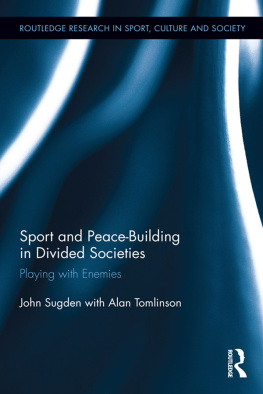Keeping the Peace
W AR AND S OCIETY
A series edited by S. P. Reyna and R. E. Downs
V OLUME 1
Feuding and Warfare: Selected Works of Keith F. Otterbein
V OLUME 2
Studying War: Anthropological Perspectives
Edited by S. P. Reyna and R. E. Downs
V OLUME 3
Troubled Times: Violence and Warfare in the Past
Edited by Debra L. Martin and David W. Frayer
V OLUME 4
Roots of Violence: A History of War in Chad
Mario J. Azevedo
V OLUME 5
Deadly Developments: Capitalism, States, and War
Edited by S. P. Reyna and R. E. Downs
V OLUME 6
Language and Peace
Edited by Christina Schaffner and Anita L. Wenden
V OLUME 7
The State, Identity, and Violence: Political Disintegration in the Post-Cold War World
Edited by R. Brian Ferguson
V OLUME 8
Keeping the Peace: Conflict Resolution and Peaceful Societies Around the World
Edited by Graham Kemp and Douglas P. Fry
Keeping the Peace
Conflict Resolution
and Peaceful Societies
Around the World
Edited by Graham Kemp and Douglas P. Fry
ROUTLEDGE
NEW YORK AND LONDON
Published in 2004 by
Routledge
270 Madison Ave,
New York NY 10016
www.routledge-ny.com
Published in Great Britain by
Routledge
2 Park Square, ilton Park,
Abingdon, Oxon, OX14 4RN
www.routledge.co.uk
Copyright 2004 by Routledge
Routledge is an imprint of the Taylor Francis Group.
Transferred to Digital Printing 2010
All rights reserved. No part of this book may be reprinted or reproduced or utilized in anyform or by any electronic, mechanical or other means, now known or hereafter invented,including the indian photocopying and recording, or in any information storage or retrieval system,without permission in writing from the publishers.
Library of Congress Cataloging-in-Publication Data
Keeping the peace : conflict resolution and peaceful societies around the world / editedby Graham Kemp and Douglas P. Fry.
p. cm.(War and society; v. 8)
ISBN 0-415-94761-8 (hardback: alk. paper)ISBN 0-415-94762-6
(pbk.: alk. paper)
1. Peace-Social aspects. 2. Conflict management-Social aspects. I. Kemp, Graham,1954 II. Fry, Douglas P., 1953 III. Series: War and society (Routledge (Firm)); v. 8.
JZ5538.K438 2003
327.1'72dc21
003008813
Publisher's Note
The publisher has gone to great lengths to ensure the quality of this reprintbut points out that some imperfections in the original may be apparent.
To Leslie and Dorothy Kemp
and
Sirpa Fry
Contents
Foreword
ELISE BOULDING
This is a much-needed book at a time of acute discomfort about a century of failed efforts to outlaw war. It can not be done, say the so-called realistshumans are basically aggressive and will inevitably turn to war. But humans are basically peaceful, say the Utopianslook at the forest peoples, the people of preurban times. It's the old nature-nurture debate. But human diversity did not arise with civilization. As the studies in this book show, no two humans are alike, and even the smallest society has to deal with conflicts arising from that diversity. Every society has to cope with its hotheads.
The most important point made by bringing together a collection of studies of societies known as generally peaceful, from different parts of the globe, is that peaceful societies have many differences to deal with and have found many ways to deal with those differences that effectively hold violence in check. Some, like the Norwegians, were in fact formerly warrior societies that developed cultural technologies for dealing with violence. The United Nations General Assembly's declaration of the years 2001 to 2010 as a Decade for Education for a Culture of Peace and Nonviolence suggests the possibility that the ingredients of a peace culture exist in every society, ingredients which need to be identified and intentionally nurtured.
The concept of identifying cultural technologies for dealing with difference peacefully so they can be more widely developed and practiced is a very thought-provoking one and receives strong support in this book. The large number of ongoing violent conflicts between ethnic and cultural groups on every continent during the opening years of the twenty-first century, including rising levels of violence in Western countries, is compelling evidence of the need to identify such technologies. And yes, every society has such technologies (see Boulding 2000), but they are often hidden away out of the public eye, forgotten, and in need of rediscovery. This book needs a companion volume, Hidden Technologies for Peaceful Conflict Resolution in Violent Societies. Along these lines, the movement to discover traditional ways of peacemaking in troubled societies has recently generated some interesting publications (for example, Malan 1998; Ross 1996; also see European Platform for Conflict Prevention and Transformation 1999).
In the present volume, the contributors describe social practices that recur in all the societies considered: (1) mediation, the practice of a community gathering to hear all sides, usually with elders providing leadership; (2) avoidance, the practice of giving others their needed space (don't crowd me!); (3) self-restraint, no self-promotion (don't be a show-off!). The positive value put on peaceableness itself, on the absence of violence, and on social control reflects a strong common recognition of interdependence. The people in these societies know they need each other. (There is also widespread awareness of the danger of alcohol as a factor leading to the loss of control.) But there is great cultural diversity from society to society in how these values are expressed, ranging from the talkative, rather disputatious Rotumans in the South Pacific to the gentle, child-loving Zapotec in Mexico, with the cautious Semai of Malaysia in between.
The emphasis on diversity in styles of peaceableness from society to society is very valuable in countering both the realist and the Utopian views of "what humans are really like." Practices in child rearing are a key factor in the development of adult behavior patterns, and different approaches to training children in self-control are well described in some, but not all the chapters. It would be good to know more.
For insight into dealing with the growing violence in Western societies, the chapter on Norway is of particular interest. The focus here is on the Norse people, the warrior Vikings who became the peaceable Norwegians and who gained their independence from Sweden in 1905 without military action. (The Sami people, formerly called Lapps, of the far north of Norway are also a peaceful people but with a very different culture.) Norwegians have difficulty in dealing with diversitythey value sameness. But they also have a two-hundred-year-old practice of compulsory mediation of interpersonal conflict outside the court system, which continues to this day and is much emphasized in local communities and schools. All children are taught the skills of mediation.
The growing number of international nongovernmental organizations (NGOs) that are currently trying to facilitate conflict resolution and reconciliation processes in bitterly violent conflict settings would do well to study this book carefully. It will encourage them to look for hidden or abandoned traditional peacemaking technologies of the peoples they are working with, technologies that can be built upon in a new-old process of social learning. The more these peacemaking technologies are discovered, rediscovered, and further developed, the better humankind's prospects are for a more peaceful twenty-first century.
